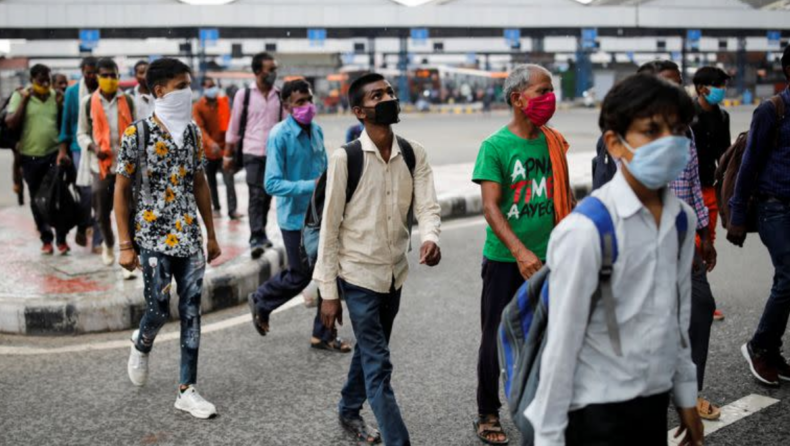Simply counting instances has little value. Even though cases are increasing in Delhi, hospital admissions have remained stable or have only barely changed.

Even though the number of COVID-19 cases in the National Capital, Delhi and its surrounding areas is rising, experts say that the rapid rise in cases is not a sign that the city is about to start a fourth wave of the virus.
However, it’s important to keep an eye on hospital admissions, which have only gone up a little in recent times, so there’s no reason to be alarmed or panicked at this point.
For the first time in more than two weeks, all COVID-19 limitations have been removed.
It is the holiday season, and people are attending events and mixing. Chandrakant Lahariya, a doctor and epidemiologist, says that “this is also reflected in socioeconomic progress and economic growth, which are greater than in pre-pandemic eras.” He also says that people should be careful and that they should keep an eye on things.
He adds, “just counting cases has no value whatsoever.” As more people get sick in Delhi, the number of people going to the hospital has stayed the same or only slightly gone up. “SARS CoV-2 will remain with us for a long time, and as a result, there will be no period during which the number of new cases will be zero,” he concluded.
According to statistics from the Delhi Health Department, the city’s COVID-19 positive rate increased to 7.72 percent on Monday, with 501 new cases. According to municipal authorities, the last time the optimism rate in the city exceeded seven percent was on January 29 (7.4 percent) and January 28 (8.6 percent), respectively.
As per the Union health ministry, on Tuesday, when 1,247 coronavirus infections were found, India’s overall positive rate was 0.31 percent. This shows that there has been a big improvement. As an infectious disease expert in the United States says, the rise in cases in Delhi and other states may be due to fewer restrictions, pandemic stress, and the virus’s increased risk of spreading.
In a statement to the media, Dr. Amit Gupta, chief of the division of infectious diseases and professor of medicine at Johns Hopkins School of Medicine, said, “We expect that this will not result in a significant increase in severe cases requiring hospitalization because this is not what we’re seeing now elsewhere despite the increased disease transmission.”
India has done an excellent job of vaccinating its citizens, and it’s now important that this be maintained, “he said. Those who are eligible will also receive booster injections. And the BA.2 subvariant of Omicron is more able to get immunity to spread infections, but it is also less deadly because of past infections and vaccinations.
Scientists also expressed concern about becoming careless.
People in the public health field say we should keep an eye on COVID cases and be ready to restart masking and social distancing if and when the number of cases rises. We should also keep an eye on current surveillance networks across the country.
The usage of masks by individuals in Delhi has decreased significantly as a result of the authorities’ decision earlier this month to waive a penalty of 500 rupees. Experts are confused about whether this was the best course of action given the increasing number of illnesses.
As per the experts, reintroducing mask regulations would be a good thing, but the current data isn’t enough to make any predictions about how the COVID-19 epidemic will progress in the country. As the BA.2 and XE subline ages become more global, experts think that COVID patterns will become more similar across the world because transmission is easier.
In recent days, there has been an increase in COVID cases in various nations, including the United States, which has been attributed to the BA.2 subvariant of the coronavirus. However, the incidents of hospitalization have remained low. In addition to Delhi, several cities have observed an increase in their COVID graphs. Kerala saw 940 new cases in the last five days, the state’s health department says.
There were a lot more COVID-positive cases in Haryana between April 5, 2022, and April 11, 2022, than there were between April 12, 2022, and April 18, 2022. The most COVID-positive cases were found in the cities of Gurugram and Faridabad, which are both near Delhi.
The cities of Noida and Ghaziabad in the state of Uttar Pradesh had a significant increase in the number of illnesses. As of the beginning of the month, there were around 45 reported cases every day across the state. There were 135 infections reported in the state on Monday.
Published by: Gargi Sharma
Edited by: Aaradhana Singh













